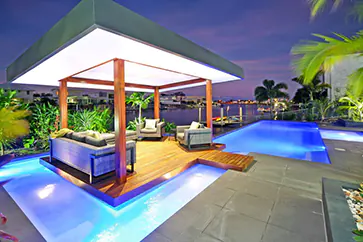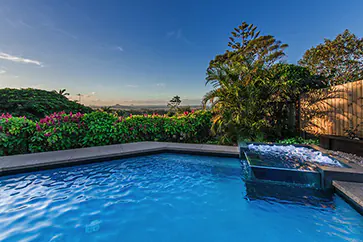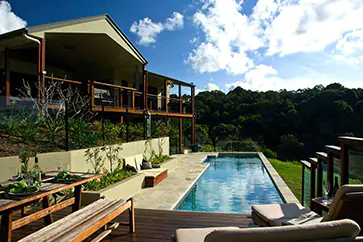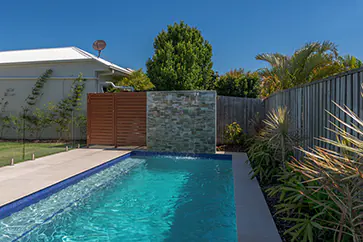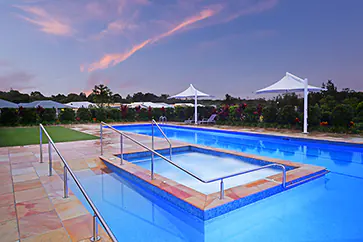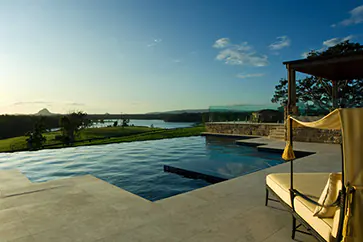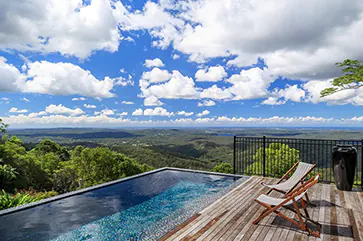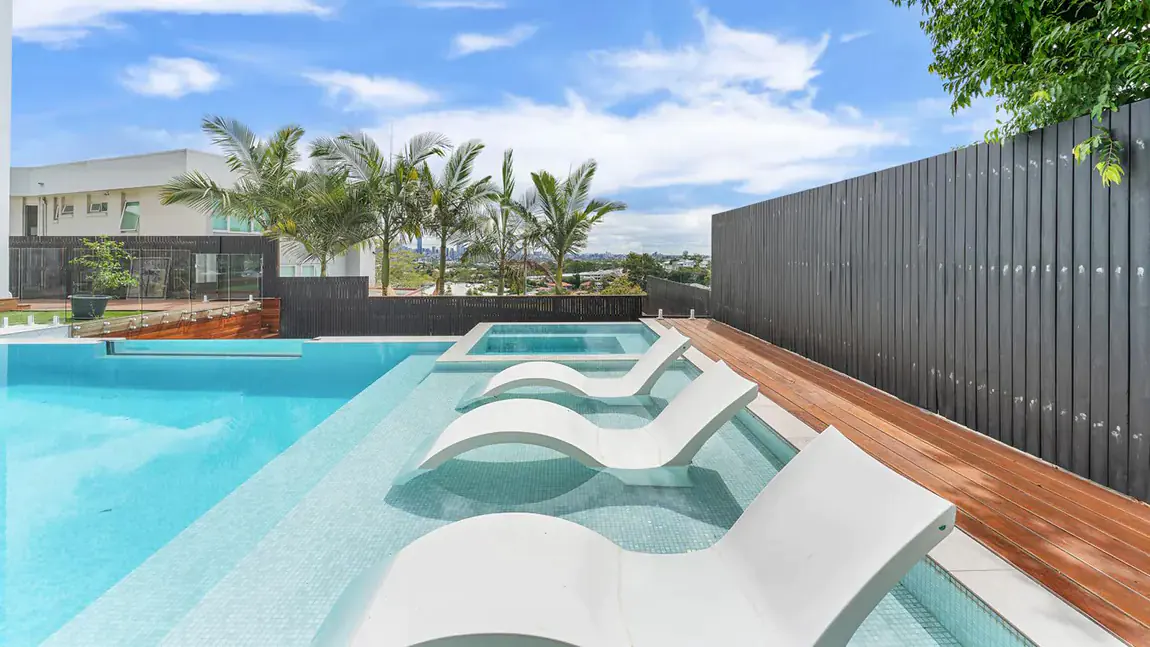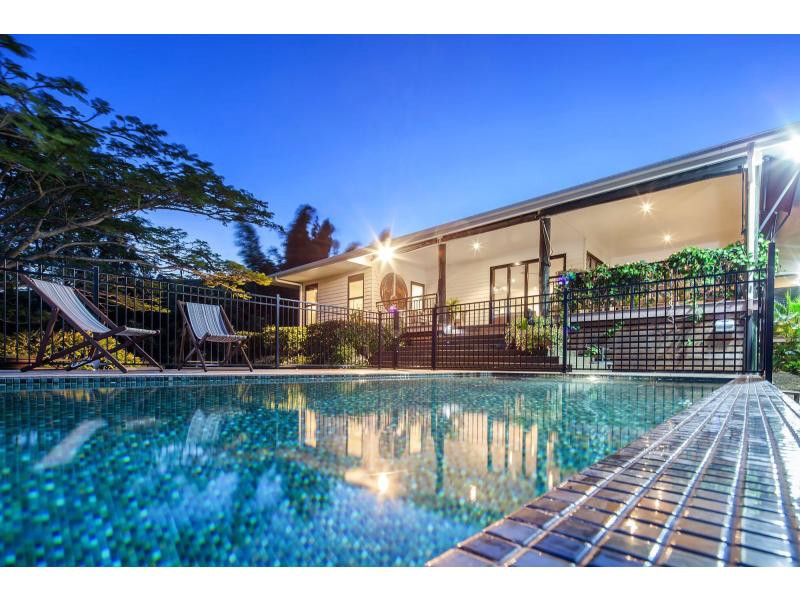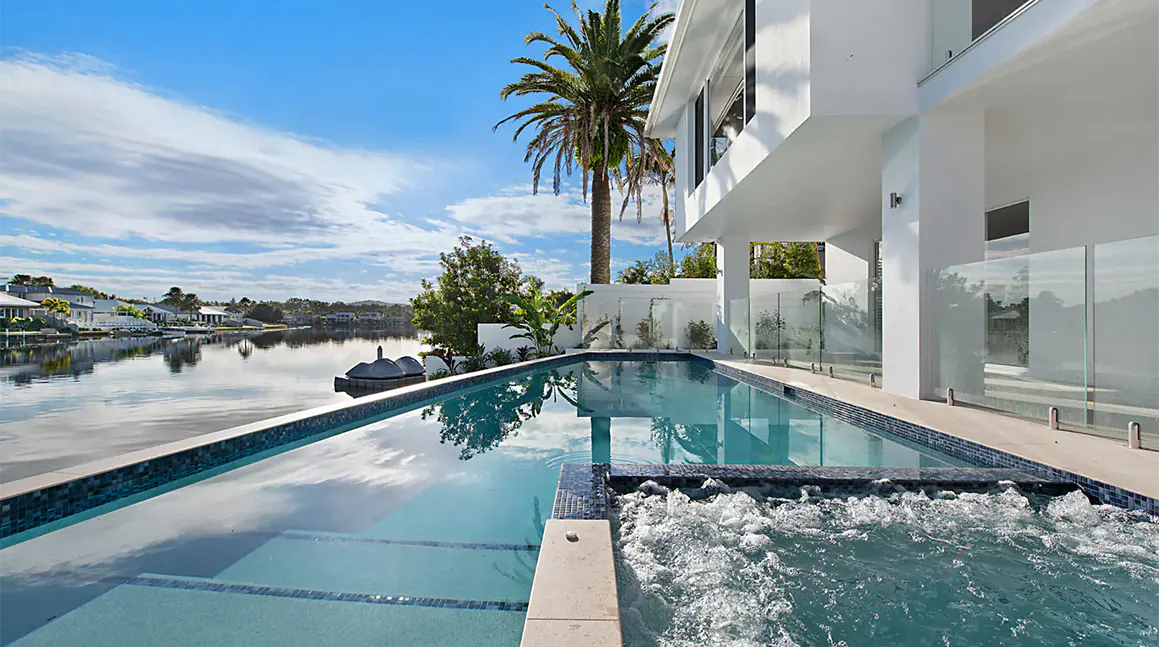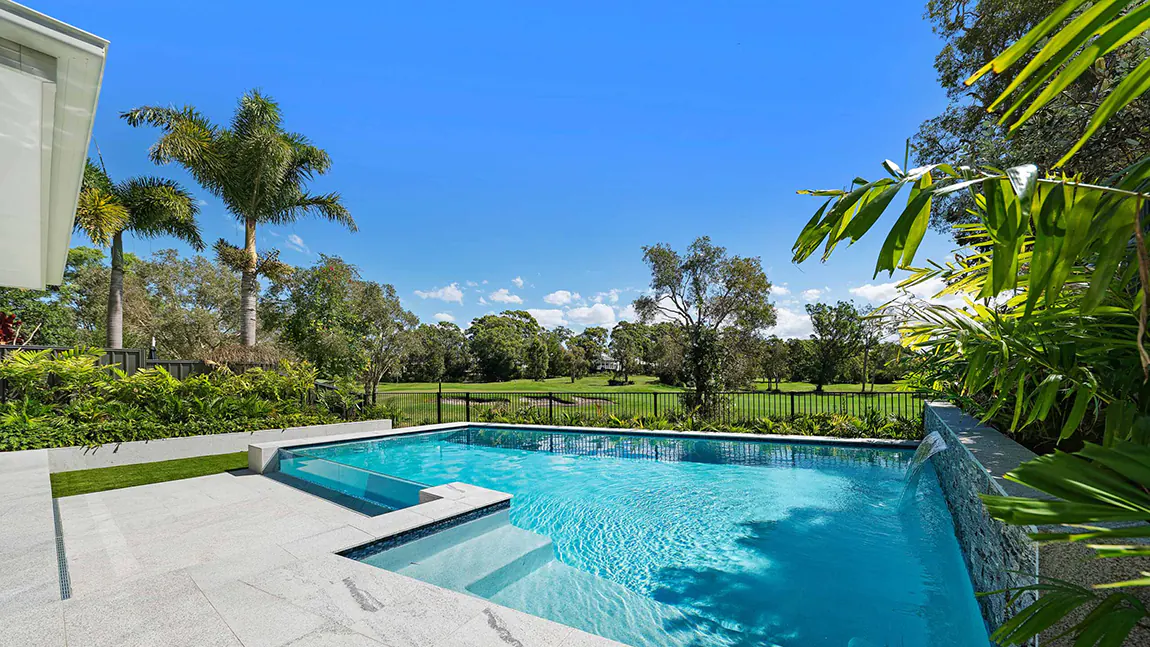Steps Involved in Installing a Concrete Pool
1) Marking and Excavation
Once your concrete pool has been approved by council, the team at Ecozen mark out the position of the pool and all other design features. It is during this time that any desired design modifications can be made. On the day that excavating is set to begin, all required earthworks equipment and other machinery is brought onsite, under the supervision of one of Ecozen’s highly experienced site managers. Onsite management personnel are able to answer all queries concerning the building process, ensuring that you only ever have a single point of contact when onsite.
2) Steel Reinforcement and Concrete Shell Plumbing
During this stage, the steel fixers comply with the project plans to reinforce your concrete pool with steel bars. This carefully laid steel structure membrane allows the concrete to adapt to the soil and climatic conditions of South-East Queensland.
It is at this time when the plumbing is also installed, as are any special pool features such as waterfalls and other equipment and accessories, such as pool lights, heaters, skimmers and so on.
3) Pool Shell
It’s during this phase that your concrete swimming pool begins to take shape, and you get a chance to see what your dream pool design is going to look like when it’s all finished. Our team transports the cement from the cement trucks to your pool, and spray it in all the important areas of your new pool.
From here, the your pool is then shaped with meticulous precision, ensuring it adheres to the council approved design requirements. This process is extremely crucial, and Ecozen only hires the very best subcontractors to perform this work. Once this process has been completed, the concrete is cured for around 30 days. During this time, clients are advised to water the concrete pool shell each day, during the first 2 weeks for best results.
4) Pool Coping
Once the concrete pool shell has cured, the pavers and tiles can be laid. Bedding is installed on top of the concrete shell to help even it out, before the coping is laid on top. The interior pool walls are then rendered, before the waterline tile band is added. All neighbouring tiles and pavers are also installed.
5) Installation of Pool Equipment and Plumbing
If the pool build necessitates it, the plumbing from your new pool to the location of the filter is completed at this time. At other times, the plumbing is done when the pool shell is constructed. The installation of pool equipment is able to be conducted at any time during the construction phase of the project. This typically dependant on the location of the filter and any plumbing that is needed.
6) Installation of Electricals
The client is typically responsible for the arrangement of all pool electrical installations. Ecozen will communicate with the client’s nominated electrician to speak about which equipment is to be utilised and the associated requirements.
7) Installation of Pool Fence
Pool fences are typically installed once all tiles and pavers have been laid. During this time, the boundary fence is also required to be finalised, or the current fence must be altered to comply with all pool safety regulations.
8) Examination of Pool Fence
A pool safety inspector will examine your pool fence for compliance and issue a Form 17. This form will certify that your pool fencing has either passed or failed the necessary safety requirements.
9) Completion of Pool Interior
Once your pool fence has been certified as safe, your concrete pool interior can be finalised. The interior is generally added one day, and acid washed the next day after. The pool is required to be filled immediately after the acid washing process has been completed.
10) Adding the water
It’s important that your new concrete swimming pool is filled with water all at once, rather than in multiple intervals. If you feel that there is a risk that the water will overflow if left on overnight, then be sure to adjust the water flow accordingly. The pool must be filled in line with the inlet of the skimmer box, otherwise the pool pumps will be unable to start up.
11) Starting the Pool for the First Time
Once your new pool has been filled with water, the filter can be started, all necessary pool chemicals can be mixed in, and the pool water can be correctly balanced. Ecozen advises clients to operate their pool with freshwater only, for the first month. After this, Ecozen will then come and add the necessary salts to your pool water.

